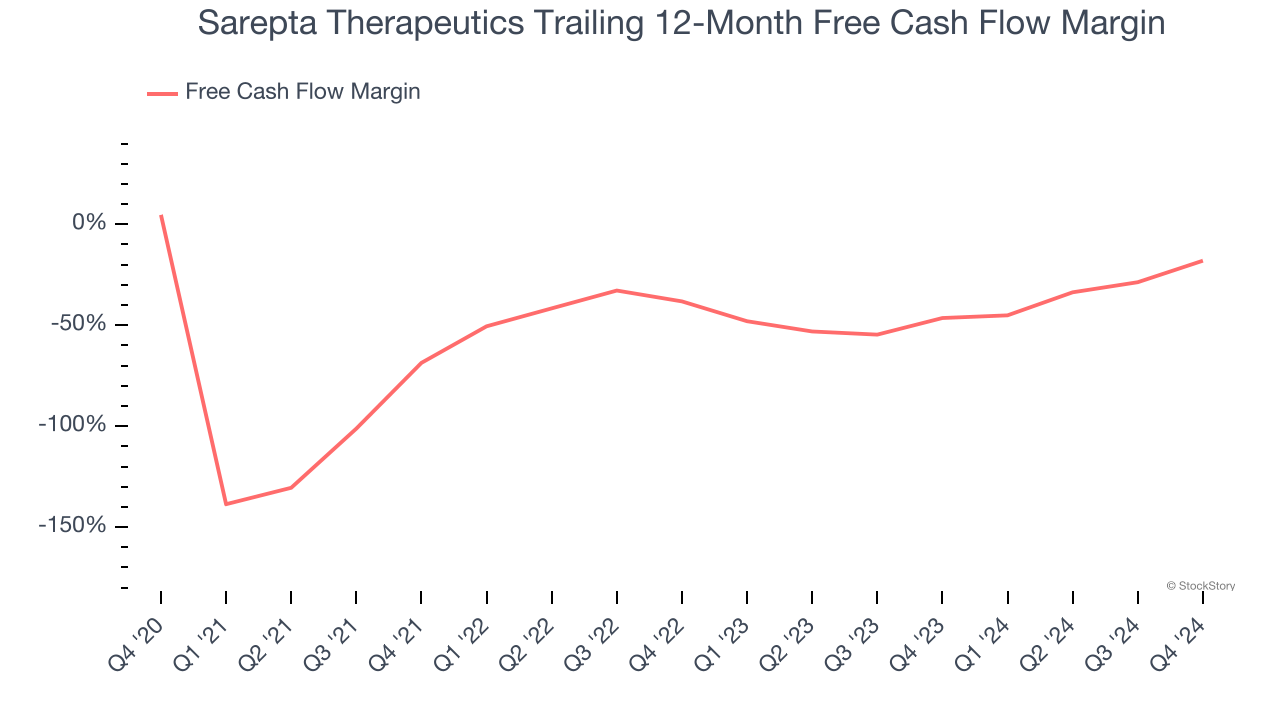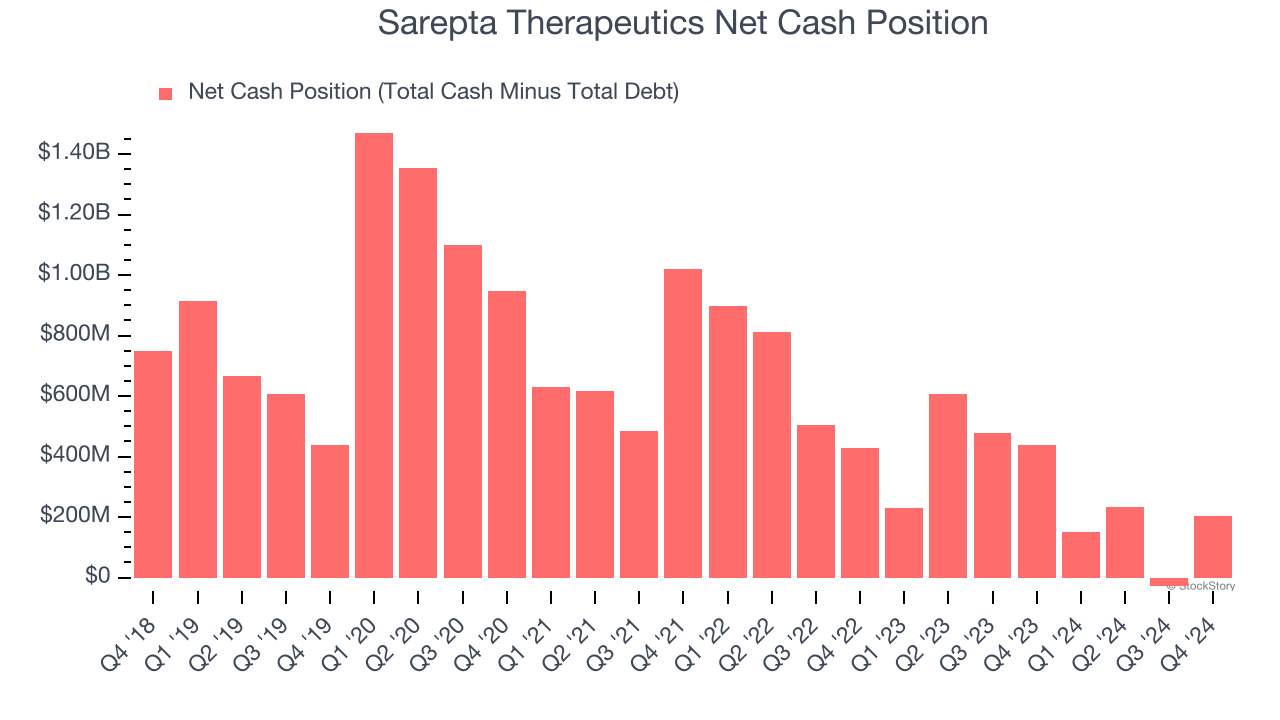
The past six months haven’t been great for Sarepta Therapeutics. It just made a new 52-week low of $52, and shareholders have lost 56.6% of their capital. This may have investors wondering how to approach the situation.
Is now the time to buy Sarepta Therapeutics, or should you be careful about including it in your portfolio? Check out our in-depth research report to see what our analysts have to say, it’s free.
Despite the more favorable entry price, we're swiping left on Sarepta Therapeutics for now. Here are three reasons why we avoid SRPT and a stock we'd rather own.
Why Is Sarepta Therapeutics Not Exciting?
Pioneering treatments for a devastating childhood muscle-wasting disease that primarily affects boys, Sarepta Therapeutics (NASDAQ:SRPT) develops and commercializes RNA-targeted therapies and gene therapies for rare genetic disorders, primarily Duchenne muscular dystrophy.
1. Fewer Distribution Channels Limit its Ceiling
Larger companies benefit from economies of scale, where fixed costs like infrastructure, technology, and administration are spread over a higher volume of goods or services, reducing the cost per unit. Scale can also lead to bargaining power with suppliers, greater brand recognition, and more investment firepower. A virtuous cycle can ensue if a scaled company plays its cards right.
With just $1.90 billion in revenue over the past 12 months, Sarepta Therapeutics is a small company in an industry where scale matters. This makes it difficult to build trust with customers because healthcare is heavily regulated, complex, and resource-intensive.
2. Free Cash Flow Margin Dropping
Free cash flow isn't a prominently featured metric in company financials and earnings releases, but we think it's telling because it accounts for all operating and capital expenses, making it tough to manipulate. Cash is king.
As you can see below, Sarepta Therapeutics’s margin dropped by 22.7 percentage points over the last five years. It may have ticked higher more recently, but shareholders are likely hoping for its margin to at least revert to its historical level. Almost any movement in the wrong direction is undesirable because it’s already burning cash. If the longer-term trend returns, it could signal it’s becoming a more capital-intensive business. Sarepta Therapeutics’s free cash flow margin for the trailing 12 months was negative 18%.

3. Short Cash Runway Exposes Shareholders to Potential Dilution
As long-term investors, the risk we care about most is the permanent loss of capital, which can happen when a company goes bankrupt or raises money from a disadvantaged position. This is separate from short-term stock price volatility, something we are much less bothered by.
Sarepta Therapeutics burned through $342.7 million of cash over the last year. With $1.35 billion of cash on its balance sheet, the company has around 47 months of runway left (assuming its $1.15 billion of debt isn’t due right away).

Unless the Sarepta Therapeutics’s fundamentals change quickly, it might find itself in a position where it must raise capital from investors to continue operating. Whether that would be favorable is unclear because dilution is a headwind for shareholder returns.
We remain cautious of Sarepta Therapeutics until it generates consistent free cash flow or any of its announced financing plans materialize on its balance sheet.
Final Judgment
Sarepta Therapeutics isn’t a terrible business, but it doesn’t pass our bar. After the recent drawdown, the stock trades at 4.7× forward price-to-earnings (or $52 per share). This valuation is reasonable, but the company’s shakier fundamentals present too much downside risk. We're pretty confident there are more exciting stocks to buy at the moment. We’d suggest looking at one of our top software and edge computing picks.
Stocks We Would Buy Instead of Sarepta Therapeutics
The market surged in 2024 and reached record highs after Donald Trump’s presidential victory in November, but questions about new economic policies are adding much uncertainty for 2025.
While the crowd speculates what might happen next, we’re homing in on the companies that can succeed regardless of the political or macroeconomic environment. Put yourself in the driver’s seat and build a durable portfolio by checking out our Top 5 Growth Stocks for this month. This is a curated list of our High Quality stocks that have generated a market-beating return of 175% over the last five years.
Stocks that made our list in 2019 include now familiar names such as Nvidia (+2,183% between December 2019 and December 2024) as well as under-the-radar businesses like Sterling Infrastructure (+1,096% five-year return). Find your next big winner with StockStory today for free.
